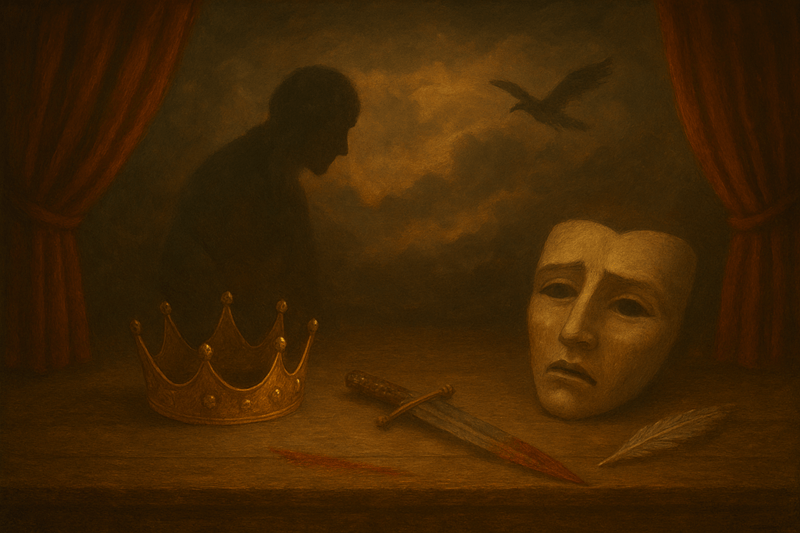Realism is a literary and artistic movement that originated in the 19th century known for its objective depiction of ordinary life. It involves careful observation of detail and explores the complexities of human psychology.
Rejecting romantic idealism, realism aims to portray the world as it truly is. It often talks about social concerns. It explores how industry and cities have impacted people and communities. Keep reading this article to learn more about the key characteristics of realism and its lasting influence on literature and society.

Origin of Realism as a Literary Device
The term Realism did not originate from a single individual but emerged naturally as a way to describe this literary movement. Some notable writers associated with literary realism include Gustave Flaubert, Honoré de Balzac, Charles Dickens, Leo Tolstoy, and Mark Twain.
Key Characteristics of Realism in Literature
Key characteristics of realism in literature include:
-
Exact Presentation: Realist literature aims to provide an accurate portrayal of the world as it truly is. It avoids idealization or romanticization. Authors depict everyday life in all its ordinary and sometimes even darker aspects.
-
Attention to Detail: Realist writers have a keen eye for detail. They paint vivid and accurate portraits of scenes, characters, and settings. Their meticulous descriptions aim to fully immerse readers in their world.
-
Focus on Character Psychology: Realist literature delves into the psychological depths of its characters. Also, they provide a thorough exploration of their thoughts, motives, and inner conflicts. This creates fully realized and multifaceted individuals on the page.
-
Social Commentary: It critiques social issues such as class inequalities, poverty, and the impacts of industrialization. Their narratives effectively shed light on the hardships faced by the working class. Also, it challenges societal conventions.
-
Common Language: Realist writers captured the language and dialogue of their time. Also, they incorporated the speech patterns of different social classes. This use of authentic language adds to the overall realism of their stories.
-
Reasonable Conspiracy: In realist literature, plots are plausible and believable. Whereas in romantic literature, events are extravagant and improbable.
-
Emphasis on Objectivity: Realist writers strive for an objective perspective. They portray events and characters as impartial observers. This technique adds a sense of authenticity and enables readers to form their conclusions.
-
Urbanization and Industrialization: Realist literature often depicts the challenges caused by urbanization and industrialization. The dynamic and conflicting social dynamics of urban environments are the central backdrop of realist works.
-
Exploring Class and Society: Realism in literature often looks at the divisions among social classes. It shows how social structures affect people. This includes depicting the challenges faced by the working class and their desire for upward mobility.
Prominent Writers of Realism in Literature
Prominent writers associated with the literary movement of realism include:
1. Gustave Flaubert: Gustave Flaubert was a renowned French novelist recognized for his exceptional focus on detail and deep exploration of human psychology in works such as Madame Bovary. This novel vividly depicts the challenges and ambitions of its characters within an authentic provincial backdrop.
2. Honoré de Balzac: One notable French author is Honoré de Balzac, famous for his extensive series of novels and stories called La Comédie Humaine. This collection offers a comprehensive portrayal of French society, with its diverse characters and depiction of different social classes.
3. Leo Tolstoy: Leo Tolstoy, a renowned Russian novelist, is celebrated for his monumental literary achievements like War and Peace and Anna Karenina. Through these works, he delves into the complexities of human relationships, society, and the profound effects that historical events have on individual lives.
4. Charles Dickens: Charles Dickens, a renowned English novelist, is celebrated for his ability to create vibrant characters and provide insightful social commentary. Through works such as Great Expectations and Oliver Twist, Dickens vividly depicts the challenges faced by the lower classes during the Industrial Revolution.
5. Thomas Hardy: Thomas Hardy is an English author famous for his novels set in the rural landscapes of Wessex. His works, including Tess of the d’Urbervilles and Far from the Madding Crowd, explore the intricate depths of human emotions and societal limitations.
6. Fyodor Dostoevsky: Fyodor Dostoevsky is a renowned Russian writer known for his influential novels, including Crime and Punishment and The Brothers Karamazov. His works delve into the complex depths of characters’ psychology and explore profound themes such as morality, guilt, and existentialism.
7. Mark Twain (Samuel Clemens): Mark Twain, an American author, is renowned for his satirical wit and regional realism in literature. His works, such as The Adventures of Huckleberry Finn, beautifully capture the vernacular and culture of the American South.
8. Émile Zola: A French novelist and journalist, is known for his association with the literary concept of naturalism. Naturalism extends the principles of realism by emphasizing scientific observation and exploring the impact of the environment on characters. Zola’s renowned Rougon Macquart series delves into various aspects of French society.
These writers, along with their contemporaries, played vital roles in shaping the realist literary movement. Through their masterful storytelling, they brought to life intricate characters, authentic settings, and critical examinations of society. This contribution helped enrich the literary landscape of their time.
Magical Realism
Key Characteristics of Magical Realism
Here are some key characteristics of magical realism:
- Blurred Boundaries: In magical realism, ordinary occurrences may contain magical elements, blurring the line between reality and fantasy. So, it can be difficult to distinguish between the supernatural and the natural.
- Matter of Facts: Perhaps the most defining characteristic of magical realism is its specific narrative voice. The author and characters accept magic as a normal part of their world, depicting it without surprise or exaggeration. This indifferent attitude towards the extraordinary is a characteristic of the genre.
- Everyday Settings: Magical realism often takes place in realistic everyday settings such as small towns, villages, or urban environments. This combination of the mundane and the magical reinforces the sense of wonder and intrigue.
- Symbolism: The magical elements in these stories often have symbolic or metaphorical meanings. They can represent deeper themes, cultural beliefs, or psychological states. These symbols enrich the story and add depth to it.
- Ambiguity: Magical realism often leaves room for interpretation and ambiguity. Readers may wonder whether these magical events are real or whether they are a product of the characters’ perceptions. This ambiguity encourages deeper engagement and reflection.
- Cultural and Folk Influences: Here, the cultural and folk traditions of the setting are often drawn upon. Myths, legends, and local beliefs are incorporated into the story, connecting magical elements to the cultural context.
- Character Centric: Magical realism literature tends to prioritize character development and interpersonal relationships. Magical elements often serve as a backdrop to explore the inner lives, emotions, and struggles of the characters.
- Philosophical Exploration: Magical realism often addresses philosophical questions about the nature of reality, perception, and human experience. It challenges conventional notions of reality and invites readers to contemplate deeper truths.
- Surreal Images: These works are known for their vivid and surreal descriptions and images. The author’s use of rich, emotional language contributes to the fantasy quality of the story.
- Socio-political Commentary: Some magical realism works use fantastical elements to comment on social or political issues. Magic can be a lens through which to explore complex social issues or injustices.
- Timelessness: Magical realism stories often have a timeless quality. They may span multiple generations or lack a clear chronological structure, contributing to the feeling that they exist outside of conventional time.
- Multiple Realities: Magical realism sometimes presents multiple realities coexisting. This could include parallel worlds, alternate dimensions, or different layers of existence, adding layers of complexity to the story.
In short, magical realism is a genre that thrives on the combination of the mundane and the magical, providing readers with a unique and thought-provoking reading experience.
Overall, realism in literature is a literary movement that emerged in the 19th century and aimed to capture life as it truly was, depicting the ordinary, mundane, and often harsh aspects of human existence.
Recommended: Feminism in Literature | Origin, Characteristics and Types



